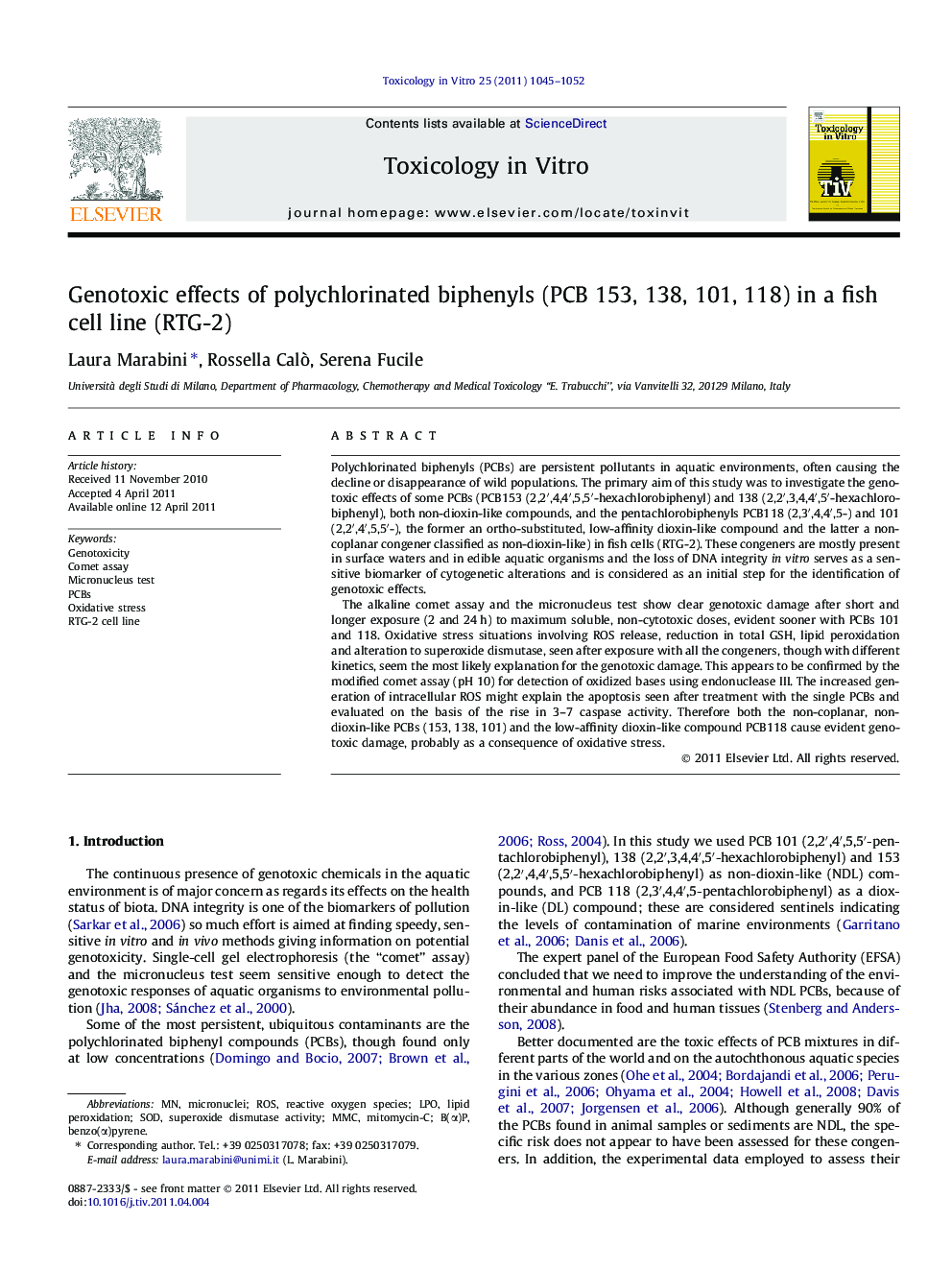| کد مقاله | کد نشریه | سال انتشار | مقاله انگلیسی | نسخه تمام متن |
|---|---|---|---|---|
| 2602613 | 1133790 | 2011 | 8 صفحه PDF | دانلود رایگان |

Polychlorinated biphenyls (PCBs) are persistent pollutants in aquatic environments, often causing the decline or disappearance of wild populations. The primary aim of this study was to investigate the genotoxic effects of some PCBs (PCB153 (2,2′,4,4′,5,5′-hexachlorobiphenyl) and 138 (2,2′,3,4,4′,5′-hexachloro-biphenyl), both non-dioxin-like compounds, and the pentachlorobiphenyls PCB118 (2,3′,4,4′,5-) and 101 (2,2′,4′,5,5′-), the former an ortho-substituted, low-affinity dioxin-like compound and the latter a non-coplanar congener classified as non-dioxin-like) in fish cells (RTG-2). These congeners are mostly present in surface waters and in edible aquatic organisms and the loss of DNA integrity in vitro serves as a sensitive biomarker of cytogenetic alterations and is considered as an initial step for the identification of genotoxic effects.The alkaline comet assay and the micronucleus test show clear genotoxic damage after short and longer exposure (2 and 24 h) to maximum soluble, non-cytotoxic doses, evident sooner with PCBs 101 and 118. Oxidative stress situations involving ROS release, reduction in total GSH, lipid peroxidation and alteration to superoxide dismutase, seen after exposure with all the congeners, though with different kinetics, seem the most likely explanation for the genotoxic damage. This appears to be confirmed by the modified comet assay (pH 10) for detection of oxidized bases using endonuclease III. The increased generation of intracellular ROS might explain the apoptosis seen after treatment with the single PCBs and evaluated on the basis of the rise in 3–7 caspase activity. Therefore both the non-coplanar, non-dioxin-like PCBs (153, 138, 101) and the low-affinity dioxin-like compound PCB118 cause evident genotoxic damage, probably as a consequence of oxidative stress.
► We investigate the genotoxic effects of some PCBs (153, 138 and 118 non-dioxin-like compounds and 101 non-dioxin-like compound in fish cells RTG-2.
► The loss of DNA integrity is considered as an initial step for the identification of genotoxic effects.
► The alkaline comet assay and the micronucleus test show clear genotoxic damage after 2 and 24 h to maximum soluble, non-cytotoxic doses.
► Oxidative stress situations seem the most likely explanation for the genotoxic damage.
Journal: Toxicology in Vitro - Volume 25, Issue 5, August 2011, Pages 1045–1052